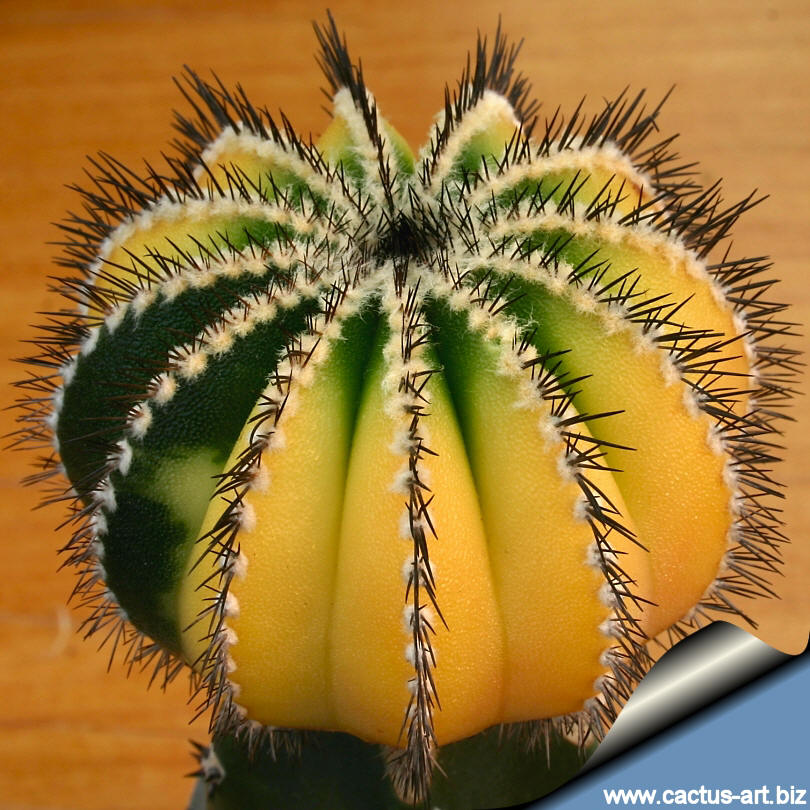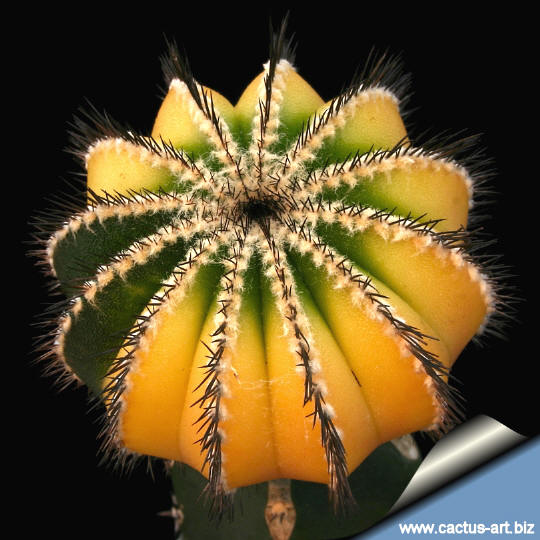|
|
|

Ubelmannia pectinifera (variegated form).
|
|
|
Description: Solitary cactus 50(-80)cm tall.
Stem: Although usually globular or slightly elongated with age.
It is colourful dark/green to reddish-green with yellow or orange
variegated part.
Ribs: 15 to 18 vertical and prominent.
Areoles: Set closely to form an almost continuous felty line down
the ribs sides.
Spines: Dark brown to black closely set neatly arranged straight
and give a comb-like effect.
Flowers: Diurnal, funnel-shaped greenish yellow. They are 15 mm
long, 12 mm in diameter.
Blooming season: Flowers come sporadically from Early Summer to
Late Summer
Photo of conspecific
taxa, varieties, forms and cultivars of
plants belonging to the Uebelmannia
pectinifera
complex
(This
Taxon has lots of synonyms ( like
many other cacti) with several controversial
varieties and subspecies, and comprises a
multitude of different forms, but where each form is linked to others by
populations of plants with intermediate characteristics):
|
|
Advertising
|
|
|
|
|
Family:
Cactaceae (Cactus
Family) |
|
Scientific name: Uebelmannia
pectinifera Buining 1967
Origin:
Garden origin (Nursery
produced cultivar)
Conservation status: Listed in
CITES appendix ?.
|
|

This is one of the most striking and recognisable cactus
and most people seem to notice it before all others in the green-house.
|
|
|
|
Cultivation: This tropical cactus prefers loves warm moist, humid
conditions and mist spraying is a must in summer. Water regularly during
the growing season and use a very draining mineral potting substrate. At
the onset of winter, do not water. Uebelmannias need heat all year round
and extra winter heat, minimum 10C is best. Avoid any frost. Keep cool
in summer. It prefers a half-sun position and possibly afternoon
shade in summer. If you can place it so that this occurs the plant will
be much happier.
Propagation: Seeds, but plants are often grafted making them
easier to grow, particularly through the winter. If possible using
a rootstock that is more hardy than the Uebelmannia is the ideal.
|
|


|
|